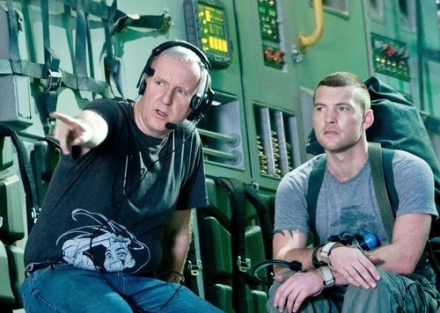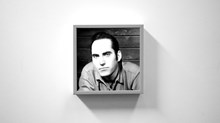
In an online story last Thursday, TIME magazine discussed the future of 3-D technology. It reminded me of a sit-down I had last December with a couple other critics in the D.C. area and 3-D evangelist Jeffery Katzenberg, one third of Dreamworks Pictures. Katzenberg brought a half hour of footage for Dreamworks' Monsters vs. Aliens, which appears in theaters this weekend. The 3-D rendering was amazing, but what was perhaps more amazing was Katzenberg's announcement that all future Dreamworks animated films will be made in 3-D. Katzenberg and others truly feel that 3-D technology has evolved to the point that in a decade or so, every film made will be in 3-D, finally fulfilling the prophetic utterances of audience-strapped studios in the mid-20th century desperate for any ploy to get people out from behind their television sets and back into theaters.
Sound familiar?
Today, of course, the threat to traditional theatrical viewing comes from the web and millions of the sleek, innocuous portable media players we all have in our pockets. And so, 3-D is back in a big way.
How big?
TIME's story focused on James Cameron's upcoming fall release, Avatar. The story of an interstellar battle between humans and aliens, Avatar, the piece said, cost somewhere in the neighborhood of $300 million! TIME has since amended the article, stating that the $300 million was a typo and the intended budget all along was "only" $200 million. But might TIME be bowing to studio pressure?
If the $300 million number is correct, that would make Avatar among the most expensive movies ever made, a feat for which Cameron is hardly unfamiliar. (His previous film, Titanic, was the most expensive movie of its day). While 20th Century Fox, the studio behind Avatar, has every right to be terrified by these numbers, if there's one person in Hollywood who has proven he can make it all back and then some, it's James Cameron.
TIME reporter Josh Quittner stated, "Spielberg predicts it will be the biggest 3-D live-action film ever. More than a thousand people have worked on it, at a cost in excess of $200 million, and it represents digital filmmaking's bleeding edge."
Beyond the production, Quittner was also floored by the film's effects. "I couldn't tell what was real and what was animated–even knowing that the 9-ft.-tall blue, dappled dude couldn't possibly be real. The scenes were so startling and absorbing that the following morning, I had the peculiar sensation of wanting to return there."
Hollywood is betting its future on a nearly 100-year-old hit-and-miss technology. Everywhere you turn, 3-D is taking over. Cameron has said that every film he puts his hand to in the future will be in 3-D (he will be releasing Titanic in 3-D soon). Likewise, George Lucas hopes to rerelease his Star Wars films in 3-D. This year alone, Disney and Pixar will be releasing five 3-D films. Steven Spielberg and Peter Jackson's next ones? Yep, 3-D.
It used to be that to create the 3-D effect, two 65-mm, 150-lb. film cameras - both shooting in sync - were needed. Today high definition, digital technology has changed all that, as the effect is rendered in a single projector. Still, in order to screen 3-D films, movie theaters will have to convert their projectors, a burden few are likely to embark on given this economy. (While Katzenburg was hoping for several thousand 3-D theaters up and running by this weekend, new reports show it will be far less as movie theaters continue to cut costs in this hemorrhaging economy). These same theaters, however, may want to consider these numbers: on average, 3-D equipped theaters generally report three to four times the box office gross of 2-D theaters. While shooting in 3-D adds about 15 percent to a film's budget, the rewards appear to be well worth it. And since 3-D movies are worthless to camcorder pirates (have you ever tried looking at the screen without your glasses on?), the studios save even more money.
That $15 3-D movie ticket may have seemed expensive last year, but as Americans tighten their belts in this economic downturn, theaters have noticed a spike in attendance. $10-15 is still quite a bit cheaper than a vacation, sporting event or concert.
Avatar, which bows this December, just may force Hollywood's hand for good. The film, which was shot in the 16,000 sq.-ft. "Spruce Goose" hangar where Howard Hughes built his wooden airplane, may also be a mammoth and unwieldy behemoth, destined never to get that far off the ground. Or it may be the colossal beginning of a whole new way of watching movies.

Support Our Work
Subscribe to CT for less than $4.25/month


















